Rising air is important because rising air expands and cools. If you cool moist air enough clouds can form.




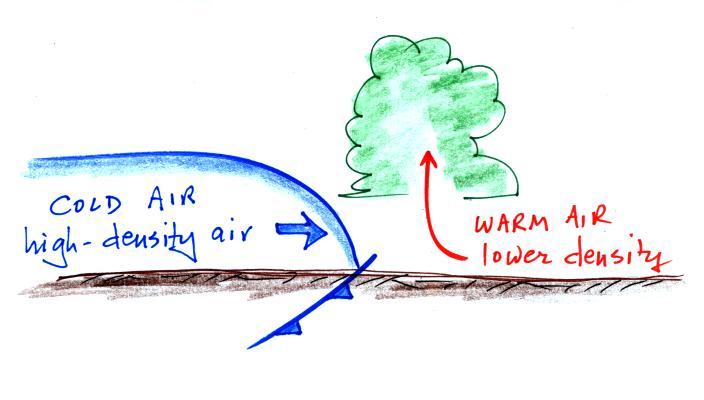 |
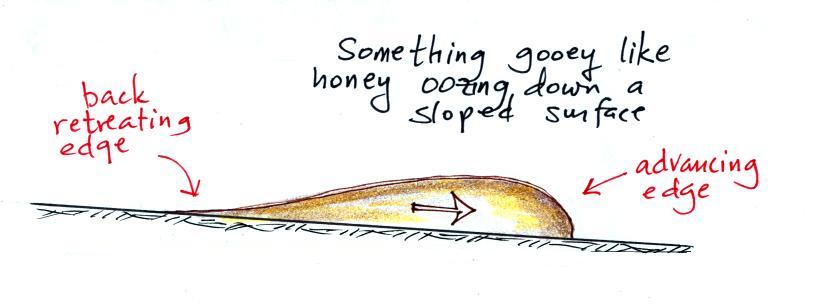 |
 |
 |

| Weather
variable |
Behind |
Passing |
Ahead |
| Temperature |
cool, cold,
colder* |
warm |
|
| Dew
Point |
usually much drier** |
may be moist (though
that is often not the case here in the desert southwest) |
|
| Winds |
northwest |
gusty winds (dusty) |
from the southwest |
| Clouds,
Weather |
clearing |
rain clouds,
thunderstorms in a narrow band along the front (if the warm air mass is moist) |
might see some high
clouds |
| Pressure |
rising |
reaches a minimum |
falling |
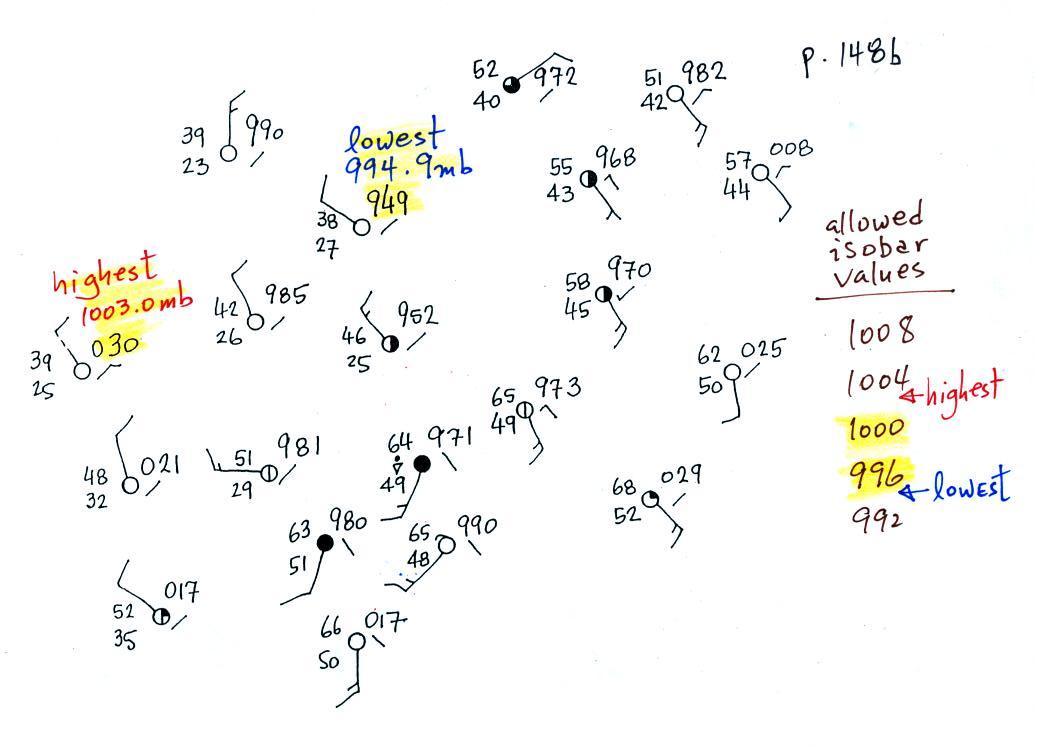

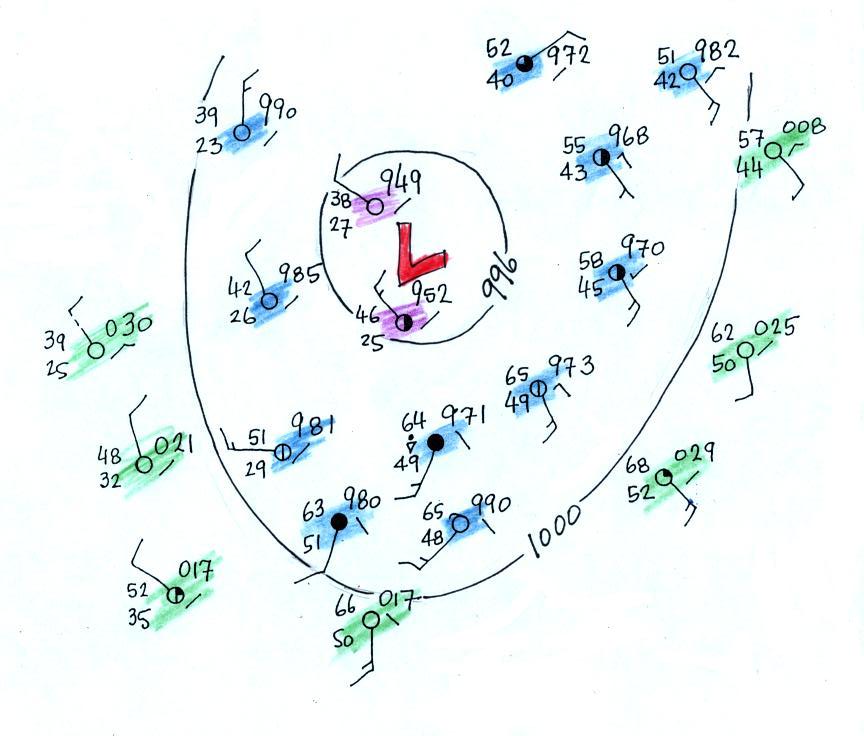
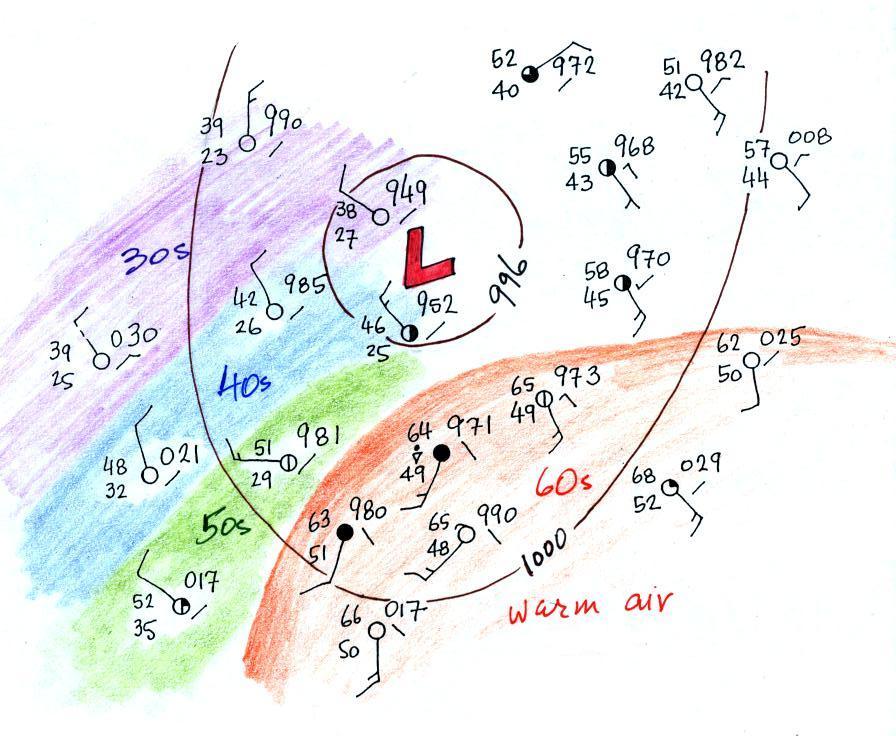
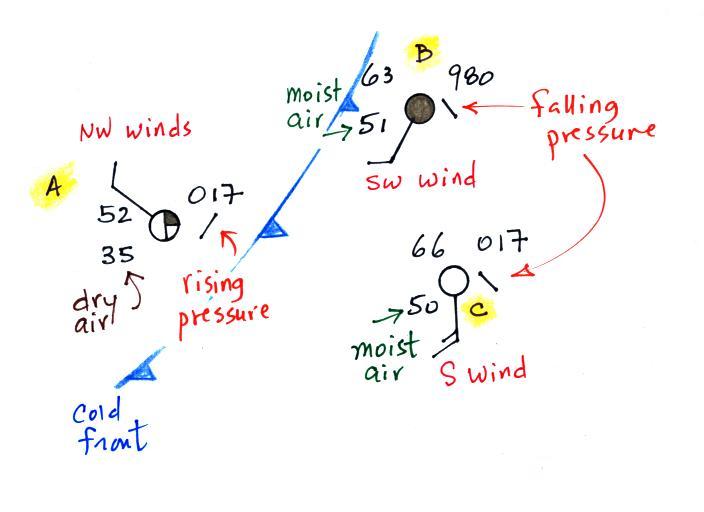


 |
 |
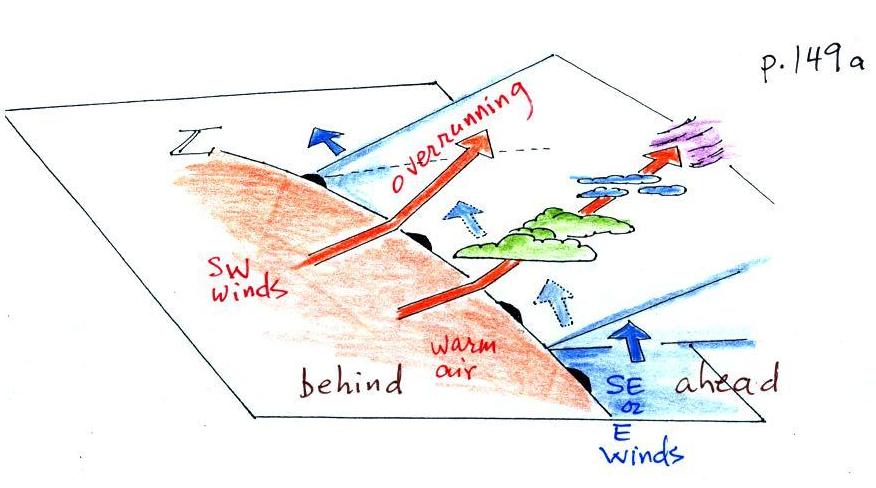
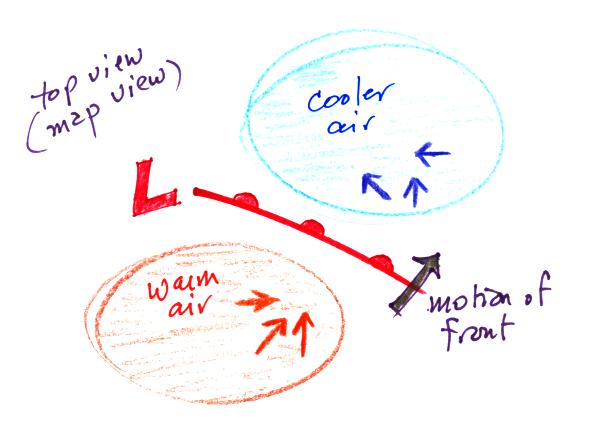
| Weather
Variable |
Behind
(after) |
Passing |
Ahead
(before) |
| Temperature |
warmer |
cool |
|
| Dew point |
may be moister |
drier |
|
| Winds |
SW, S, SE |
from the East or SE,
maybe even the S |
|
| Clouds,
Weather |
clearing |
wide
variety of clouds that may precede arrival of the front
by a day or two clouds may produce a wide variety of types of precipitation also (snow, sleet, freezing rain, and rain) |
|
| Pressure |
rising |
minimum |
falling |